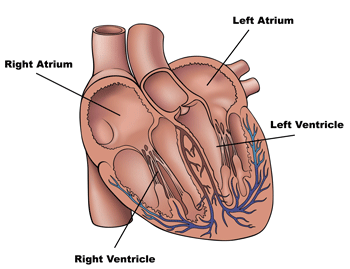 Another system I remember is how the heart works. The heart has two main arteries, which pump oxygenated and deoxygenated blood to their specific places in the body. Deoxygenated blood enters (I think) the left artery and is pumped through to the lungs to be oxygenated. Oxygenated blood is pumped through the right artery and is circulated through the body. There are more parts in each artery, but I can't remember what they are. The heart is the most important muscle in our body, it keeps us alive and moving. It circulates blood that comes in from our lungs all over our body. The lungs are another important part of our bodies. We suck in air through our mouth or nose, it goes through a tube that is behind the tube that brings food to the stomach, and hits the alveoli in the lungs, which send it through to the blood behind waiting to be oxygenated.
Another system I remember is how the heart works. The heart has two main arteries, which pump oxygenated and deoxygenated blood to their specific places in the body. Deoxygenated blood enters (I think) the left artery and is pumped through to the lungs to be oxygenated. Oxygenated blood is pumped through the right artery and is circulated through the body. There are more parts in each artery, but I can't remember what they are. The heart is the most important muscle in our body, it keeps us alive and moving. It circulates blood that comes in from our lungs all over our body. The lungs are another important part of our bodies. We suck in air through our mouth or nose, it goes through a tube that is behind the tube that brings food to the stomach, and hits the alveoli in the lungs, which send it through to the blood behind waiting to be oxygenated.Another piece of information I know about the Human Body is that nerves send signals to the brain telling it where to send blood or what to do. When we feel pain a nerve in the distressed area calls up to the brain saying we got hurt. The brain also does many other things like controlling every muscle, artery, and thing that makes up our body. If our brain doesn't work we can't live.
Sadly this is all I can remember about the human body, and what I learned in 5th grade. I am very excited to relearn things about the human body, and learn knew things I didn't know before.









